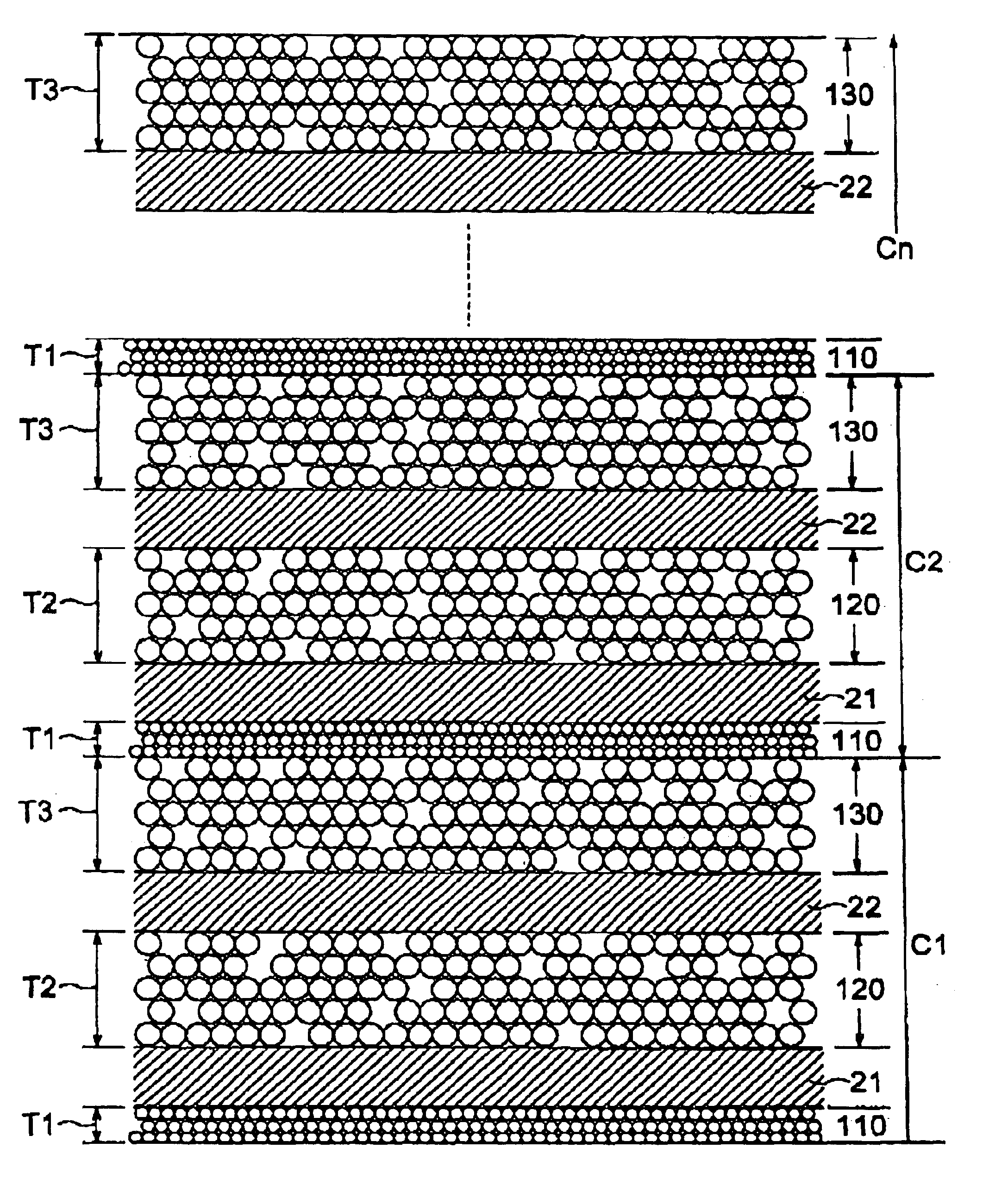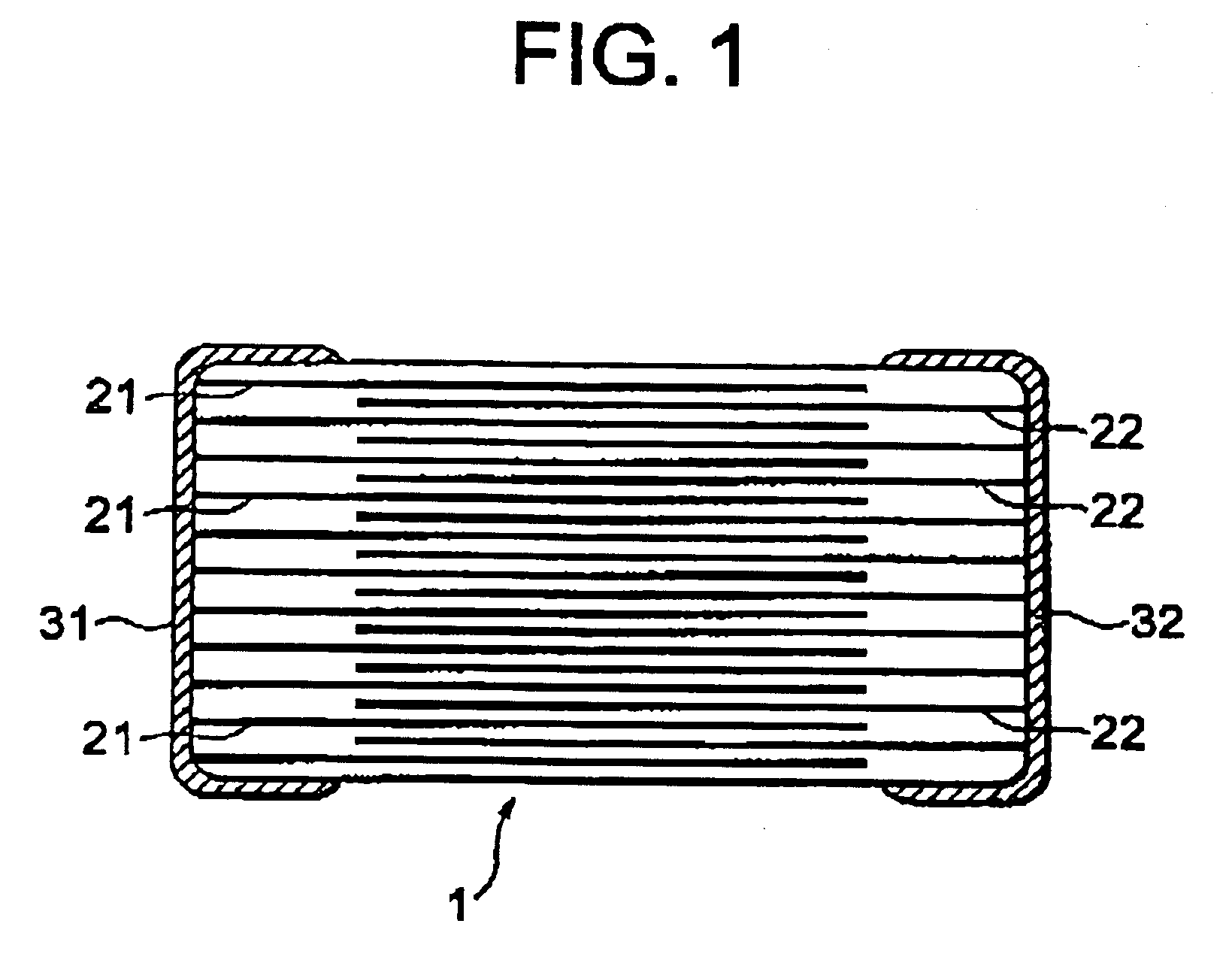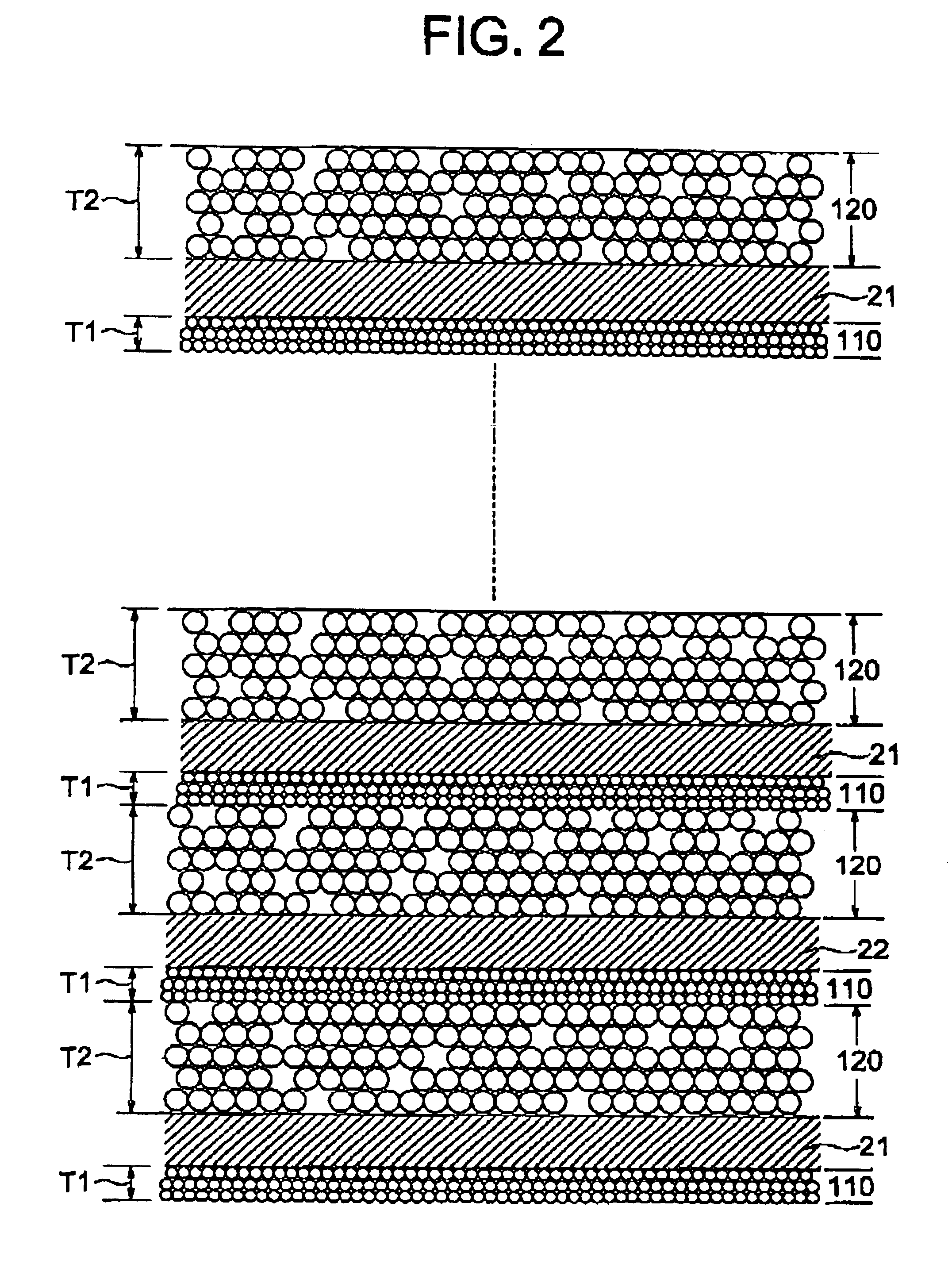Ceramic electronic device and method of production of same
a ceramic electronic device and ceramic coating technology, applied in the manufacture of fixed capacitors, fixed capacitor details, fixed capacitors, etc., can solve the problems of difficult peeling off of ceramic coating layers from the substrate, no longer able to obtain targeted electrostatic capacity, and holes or wrinkles in ceramic coating layers
- Summary
- Abstract
- Description
- Claims
- Application Information
AI Technical Summary
Benefits of technology
Problems solved by technology
Method used
Image
Examples
second embodiment
Next, a multilayer ceramic capacitor according to another embodiment of the present invention will be explained.
FIG. 15 is an enlarged cross-sectional view schematically showing the internal structure of a multilayer ceramic capacitor according to a second embodiment of the present invention. For convenience in illustration, the middle part is not shown. The overall cross-section of the multilayer ceramic capacitor according to the present embodiment is the same as that shown in FIG. 1 and includes the ceramic body 1, internal electrodes 21 and 22, and terminal electrodes 31 and 32. In the present embodiment, however, as shown in FIG. 15, the ceramic body 1 includes first ceramic layers 110, second ceramic layers 120, and third ceramic layers 130. Note that at least one ceramic layer present between pairs of adjoining internal electrodes 21 and 22 is a multilayer structure. From this viewpoint, the third ceramic layer 130 in the present embodiment corresponds to the second ceramic l...
PUM
| Property | Measurement | Unit |
|---|---|---|
| thickness | aaaaa | aaaaa |
| thickness | aaaaa | aaaaa |
| thicknesses | aaaaa | aaaaa |
Abstract
Description
Claims
Application Information
 Login to View More
Login to View More - R&D
- Intellectual Property
- Life Sciences
- Materials
- Tech Scout
- Unparalleled Data Quality
- Higher Quality Content
- 60% Fewer Hallucinations
Browse by: Latest US Patents, China's latest patents, Technical Efficacy Thesaurus, Application Domain, Technology Topic, Popular Technical Reports.
© 2025 PatSnap. All rights reserved.Legal|Privacy policy|Modern Slavery Act Transparency Statement|Sitemap|About US| Contact US: help@patsnap.com



